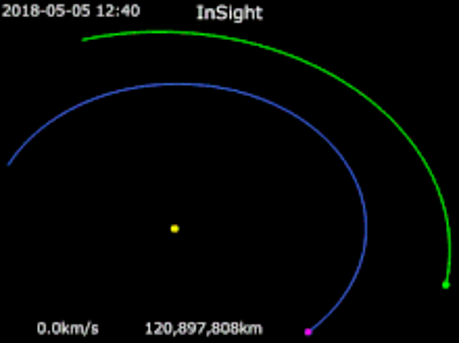Mangalyaan : The Unimaginable dream come True.
- Anay Baid
- Jul 8, 2021
- 4 min read
Updated: Nov 4, 2021
On 5th November 2013, a 434 crore satellite was in India’s elusive yet not-so-powerful PSL (Polar Satellite Launch Vehicle) C-25 Rocket, waiting at Sriharikota SDCC (Satish Dhawan Space Centre) for its daring encounter with the Red Planet after 10 months.
As a small child, I was sitting in my room listening keenly to the radio at 2:38 pm, the same day. I was thrilled and fascinated by the comments made and I vividly remember the moment when the rocket took off and along with it, the hopes, dreams and aspirations of a billion Indians.
This was a remarkable and historic mission in many ways. It became the cheapest interplanetary mission ever in the history of humanity. The average age of the team was just 34 years old. The mission used a mind-bogglingly low amount of fuel to carry out such a massive and risky endeavour.
The mission was a "technology demonstrator" project to develop the technologies for designing, planning, management, and operations of an interplanetary mission. It carried five scientific instruments. The spacecraft was then being monitored from the Spacecraft Control Centre at ISRO Telemetry, Tracking and Command Network (ISTRAC) in Bengaluru with support from the Indian Deep Space Network (IDSN) antennae at Bengaluru, Karnataka.
The mission to Mars had some scientific objectives, namely :
· Exploration of Mars surface features by studying the morphology, topography and mineralogy
· Study the constituents of Martian atmosphere including methane and CO2 using remote sensing techniques
· Study the dynamics of the upper atmosphere of Mars, effects of solar wind and radiation and the escape of volatiles to outer space
The mission would also provide multiple opportunities to observe the Martian moon Phobos and also offer an opportunity to identify and re-estimate the orbits of asteroids seen during the Martian Transfer Trajectory.
From my memories from childhood, I could barely imagine the success of this mission, since I had known only NASA till then. One thing that I knew for sure was that there had to be some margin of error in the functioning of the entire system but surprisingly, ISRO’s mission barely had any. It was a huge gamble and it paid off.
Credit also goes to the amazing and brilliant scientists of ISRO: Dr K Sivan, Dr A S Kiran Kumar and many others, headed by their experienced leader Dr K Radhakrishnan, the then ISRO chairman. They did use their scientific prowess, skills and abilities to tackle the seemingly impossible mission.
Another thing to be noted is that the time gap for ISRO to create a complex and autonomous mission like this was ridiculously less, that is, within 24 months.
It proved to be possible due to the excellent work culture at ISRO, where scientists spend long hours of the day working for a mission everyone ridiculed and thought was never possible.
At that time India was very far behind compared to the Space agencies of the United States of America and Europe.
ISRO was always poorly funded and that was the major reason why such risky and dangerous manoeuvres had to be undertaken. Had ISRO been sufficiently funded, the case would have been something else.
Anyway, ISRO, in this mission had used a concept from Orbital Mechanics, known as Hohmann’s theory or the Hohmann transfer orbit in specific. This approach was ideal as the Hohmann transfer often uses the lowest possible amount of propellant in travelling between orbits.
Example of the Hohmann transfer orbit.
Here is a Statistic that shows the various data and specifications that had to be met in order for a successful Trajectory to the Perigee and later reaching escape velocity at the Apogee to escape the gravitational sphere of influence of Earth. We were smart to use gravity to beat gravity itself.
The final part of the mission was the most crucial part of the mission itself. It was the Injection in the Martian System or MOI ( Mars Orbit Insertion ). Our engine had been shut down for the last 10 months accounting for the lack of fuel and its conservation in this mission, and it was very important to revive that, which could successfully slow down the speed of the satellite with the help of propellant and gain enough velocity so that it does not attain the value of the escape velocity to go past Mars into the unknown.
The craft was inclined at an angle of 180 degrees to achieve speed reduction and all its LAM engines were woken up from hibernation and all its thrusters were fired with maximum velocity. This was performed with utmost perfection and precision. ISRO celebrated its victory over Mars, being the first space agency to do it in its very first attempt. It created history and we proved we were no less than anyone, and that dreams have no limits.
This mission changed my outlook on Space Missions completely. I was touched and moved by this feat from ISRO. Dr A P J Abdul Kalam is my idol know, who taught me that we should always dream and strive in working hard to achieve it.
I truly believe that this mission has inspired an entire generation of children who would be thought-leaders in the future and would want to use their skills and abilities for the betterment of Human Society. And we can just wait and see the next big steps taken by our teenagers, who are the future of ISRO.











Comments